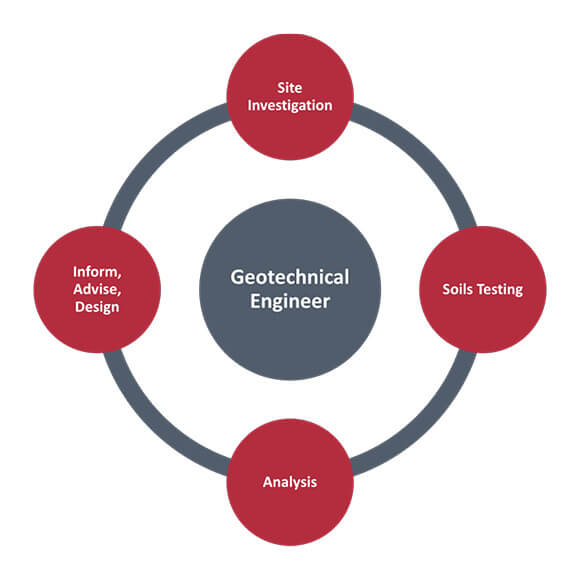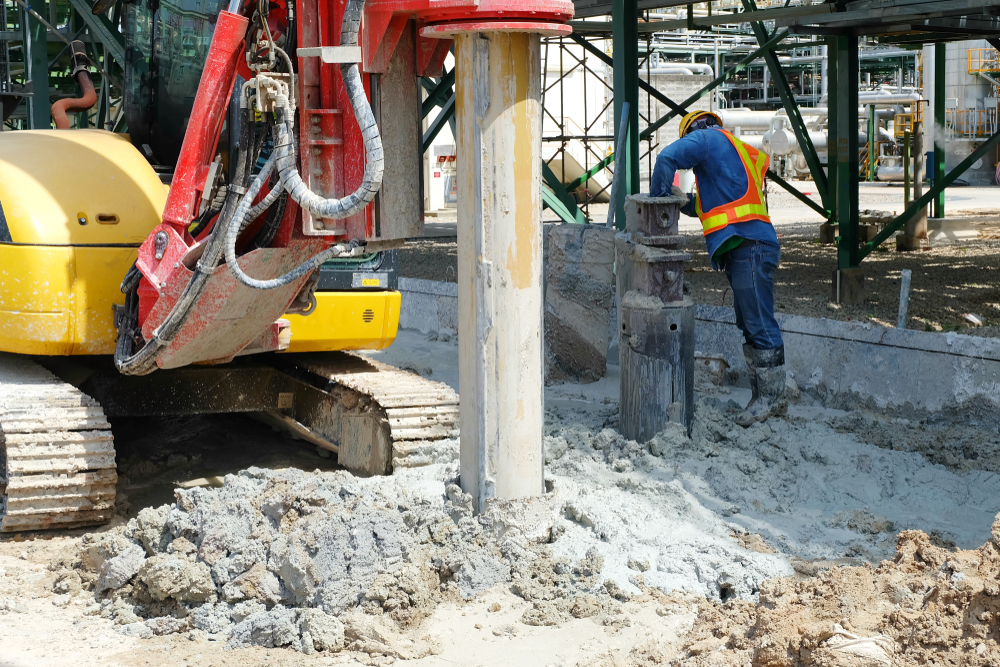Fascination About Geotechnical Engineering Services South Africa
Wiki Article
Getting My Geotechnical Engineering Services South Africa To Work
Table of ContentsSome Known Questions About Geotechnical Engineering Services South Africa.Everything about Geotechnical Engineering Services South AfricaThe 3-Minute Rule for Geotechnical Engineering Services South AfricaThe Ultimate Guide To Geotechnical Engineering Services South AfricaUnknown Facts About Geotechnical Engineering Services South Africa
Rates of pay generally raise as your understanding and skills expand, with guidelines aiming to a graduate beginning salary of in between 18,000 and 28,000 per year in the UK. This increases to 26,000 to 36,000 with a couple of years of experience and after that reaching 40,000 to 60,000+ for elderly, legal or master designers.With the ideal application it is possible to grasp the occupation and gain entry to a challenging yet fulfilling and important job. A rock hound would need to re-train to come to be a geotechnical designer, although there is plenty of cross-over between both occupations, which can make this easier. Geologists need to have an understanding of soils, rocks and various other products from a scientific perspective, while geotechnical designers tale their expertise of matters such as soil and rock auto mechanic, geophysics and hydrology and use them to engineering and environmental tasks.
When starting, these designers will certainly tend to function on much less complex jobs, accumulating knowledge and experience prepared for even more tough work later. Geotechnical engineers often tend to be experts in particular areas as they expand in experience, concentrating on particular facilities such as trains, roads or water. These designers also deal with renewable resource, offshore and onshore oil and gas, nuclear power, and extra.
The time taken to become a geotechnical engineer depends on where you are based, where you research study and what degree of education you desire to acquire prior to getting in the office. Geotechnical Engineering Services South Africa. Generally-speaking it takes 3-4 years to get to the standard demands to begin an occupation as a geotechnical designer.
Rumored Buzz on Geotechnical Engineering Services South Africa
This short article will highlight 3 necessary elements that make geotechnical professionals needed for any kind of construction job. In essence, geotechnical designers are responsible for the evaluation of the ground and dirt conditions in concern.All land decrease and natural danger mitigation techniques/tests are used to examine the terrain overall. Geotechnical Engineering Services South Africa. The concept is to lower the risk of mishaps during and after the construction process. Without these experts, professionals may assure that the structure will not establish distress during the building procedure. This is especially useful in areas where the exact same set or similar tools and resources need to be made use of in greater than one job.

Unknown Facts About Geotechnical Engineering Services South Africa

Internal training and national-level certifications are readily available for profession advancement. Responsibilities include screening asphalt, concrete, and aggregate products, in addition to maintaining laboratory equipment. This duty is suitable for those with an eager interest in lab procedures and quality control. As the need for geotechnical design professionals proceeds to rise, now is an ideal time to think about a career in this dynamic area.
Quality control (QA) boils down to having a measurable test result. There are several tests geotechnical designers can perform that create factual, clinical details, that forecast groups can make use of to make clever project choices and guarantee the contract demands are being fulfilled. You can use a nuclear densometer to measure moisture material and density of dirt.
Quality control (QC) includes visual observation by the geotechnical designer. For instance, the designer would observe the compaction of the dirt to guarantee it was performed in conformity to agreement files. Observation of the compaction would certainly offer as the proof, instead than a test with a quantifiable outcome that was obtained by the nuclear densometer in the instance in the paragraph above.
The Geotechnical Engineering Services South Africa Ideas
Keeping that borehole, you commonly drill to a pre-determined deepness or a deepness affected by come across subsurface conditions that deviated from assumptions. If it is natural dirt through-out deepness, you may presume that you will also locate usually the exact same material from useful reference within that opening in the rest of the area you are constructing your structure.
A lot more boreholes or other methods of exploration/testing (i.e. test pits, geoprobes, CPTs, and so on) would certainly help you far better define the subsurface account, but there is always a possibility that the subsurface outside of the exploration/testing places varies substantially from what was visually observed. Undocumented manmade fill is different than natural soil because you most certainly never understand what you are mosting likely to experience (e.g.
As a result of the unpredictability of the undocumented fill, most projects need the elimination or improvement of the fill within the recommended structure restrictions and under various other load birthing frameworks. This is due to the fact that the homes of the undocumented fill are normally extremely heterogeneous and may not be similar as the buildings run into in the exploration/test place.
The 3-Minute Rule for Geotechnical Engineering Services South Africa
Geotechnical designers can utilize a system of instruments such as inclinometers, study tracking points, piezometers, extensometers, or negotiation plates. Inclinometers may be set up behind an excavation support wall surface to gauge just how much the wall steps due to excavation. Activity of the wall surface inward towards the excavation implies that there can be a loss of ground behind the wall and for that reason possibly negotiation.Report this wiki page